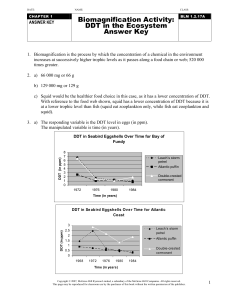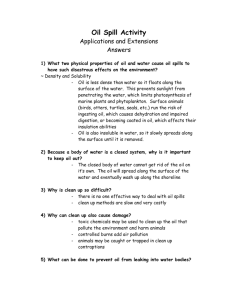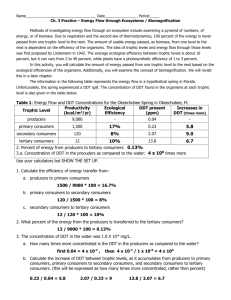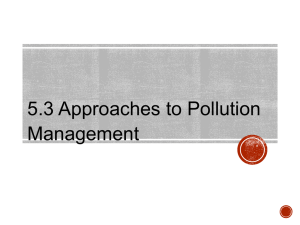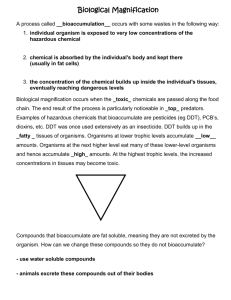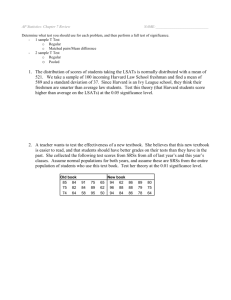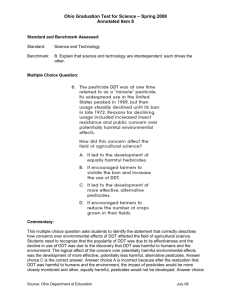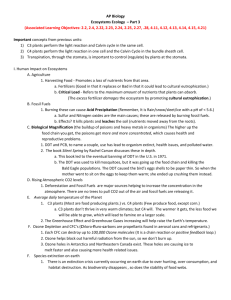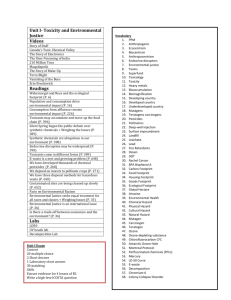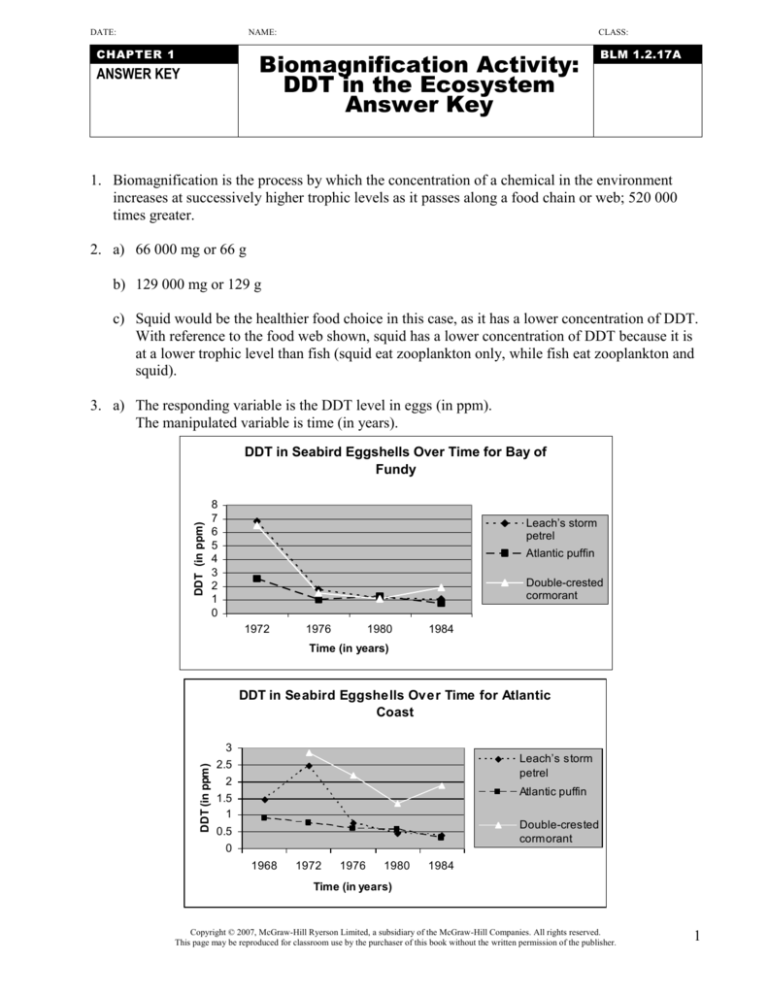
DATE:
NAME:
CHAPTER 1
CLASS:
Biomagnification Activity:
DDT in the Ecosystem
Answer Key
ANSWER KEY
BLM 1.2.17A
1. Biomagnification is the process by which the concentration of a chemical in the environment
increases at successively higher trophic levels as it passes along a food chain or web; 520 000
times greater.
2. a) 66 000 mg or 66 g
b) 129 000 mg or 129 g
c) Squid would be the healthier food choice in this case, as it has a lower concentration of DDT.
With reference to the food web shown, squid has a lower concentration of DDT because it is
at a lower trophic level than fish (squid eat zooplankton only, while fish eat zooplankton and
squid).
3. a) The responding variable is the DDT level in eggs (in ppm).
The manipulated variable is time (in years).
DDT (in ppm)
DDT in Seabird Eggshells Over Time for Bay of
Fundy
8
7
6
5
4
3
2
1
0
Leach’s storm
petrel
Atlantic puffin
Double-crested
cormorant
1972
1976
1980
1984
Time (in years)
DDT in Seabird Eggshells Over Time for Atlantic
Coast
DDT (in ppm)
3
Leach’s storm
petrel
2.5
2
Atlantic puffin
1.5
1
Double-crested
cormorant
0.5
0
1968
1972
1976
1980
1984
Time (in years)
Copyright © 2007, McGraw-Hill Ryerson Limited, a subsidiary of the McGraw-Hill Companies. All rights reserved.
This page may be reproduced for classroom use by the purchaser of this book without the written permission of the publisher.
1
DATE:
NAME:
CHAPTER 1
ANSWER KEY
Biomagnification Activity:
DDT in the Ecosystem
Answer Key
CLASS:
BLM 1.2.17A
Graphs should include a title, labels of the responding and manipulated variables on the axes,
and correct measurement units. A line graph showing each bird species in a different colour
is the most effective graph for the data.
b) On average, pesticide levels in birds’ eggs from nesting sites around the Bay of Fundy are
higher than in eggs from nesting sites along the Atlantic coast.
c) On average, pesticide levels fell for all three bird species. This trend might be accounted for
by the ban/restriction of DDT use after the 1960s.
d) On average, pesticide levels were highest in eggs of the double-crested cormorant, which
feeds on larger fish. Levels were more similar for the eggs of Leach’s storm petrel, which
feeds on small organisms near the surface of the water, and those of the Atlantic puffin,
which consumes small fish. These differences reflect an increase in DDT in eggs laid by
birds belonging to higher trophic levels. However, following this trend, one would expect
DDT levels to be lower in Leach’s storm petrel eggs than in Atlantic puffin eggs. Thus, it
would be useful to know the exact role each bird species plays in its food web and the
concentration of DDT in its main food source.
4. a) Both Inuit people and polar bears have a diet that is particularly high in seafood, including
fish and marine life at higher trophic levels. Further, pollutants tend to accumulate in the
world’s polar regions due to air and water circulation patterns, causing the Arctic to act as a
sink for such non-degradable toxins.
b) DDT is a non-degradable chemical. This means that it persists in the environment over time.
It moves through the food web until it reaches the top carnivore at the highest trophic level.
Once this carnivore dies, it passes to decomposers, who return it to the environment, where
producers take it up again. Thus, it continues to cycle through the environment even though it
was banned 40 years ago. Additionally, DDT is still being used in some parts of the world.
Copyright © 2007, McGraw-Hill Ryerson Limited, a subsidiary of the McGraw-Hill Companies. All rights reserved.
This page may be reproduced for classroom use by the purchaser of this book without the written permission of the publisher.
2


